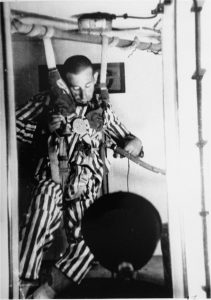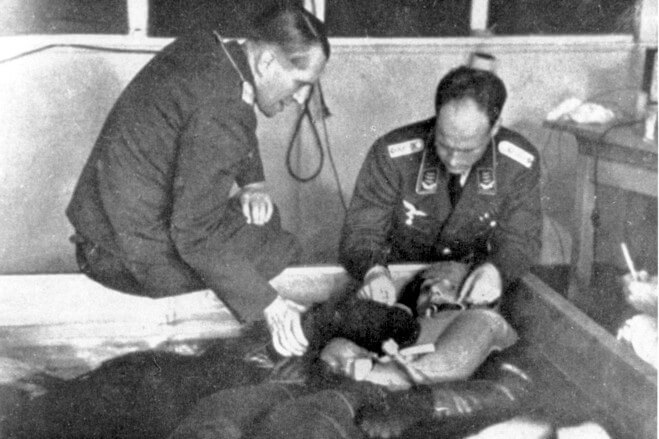Part 4C: Medical Experiments

A Dachau concentration camp prisoner in a special chamber loses consciousness in response to changing air pressure during high-altitude experiments, March-August 1942. Photo credit: USHMM #78619A
German doctors and scientists conducted a series of cruel experiments on at least 7,000 people including Jews, Poles, Roma and Sinti, homosexuals, and other incarcerated groups. Nazi scientists used prisoners’ bodies to test the limits of human physiology, practice surgical treatments, attempt to prove their racist theories, and advance the science of the German war effort.

View of the cemetery at the Hadamar Institute in Hesse, Germany, where victims of the Nazi Euthanasia Program (Aktion T4) were buried in mass graves soon after the liberation on April 15, 1945. Photo credit: USHMM #73719
Nearly 200 German doctors were stationed across the camps to conduct the tests, without regard for the safety or suffering of the prisoners. In Dachau, prisoners were immersed in near-freezing water to study the physical effects of hypothermia. Dr. Mengele preferred to experiment on twins (usually children) in Auschwitz-Birkenau, seeing them as an ideal control group. Some of Dr. Mengele’s more infamous experiments included sewing twins together or studying the effects of disease when transfusing blood between twins.
